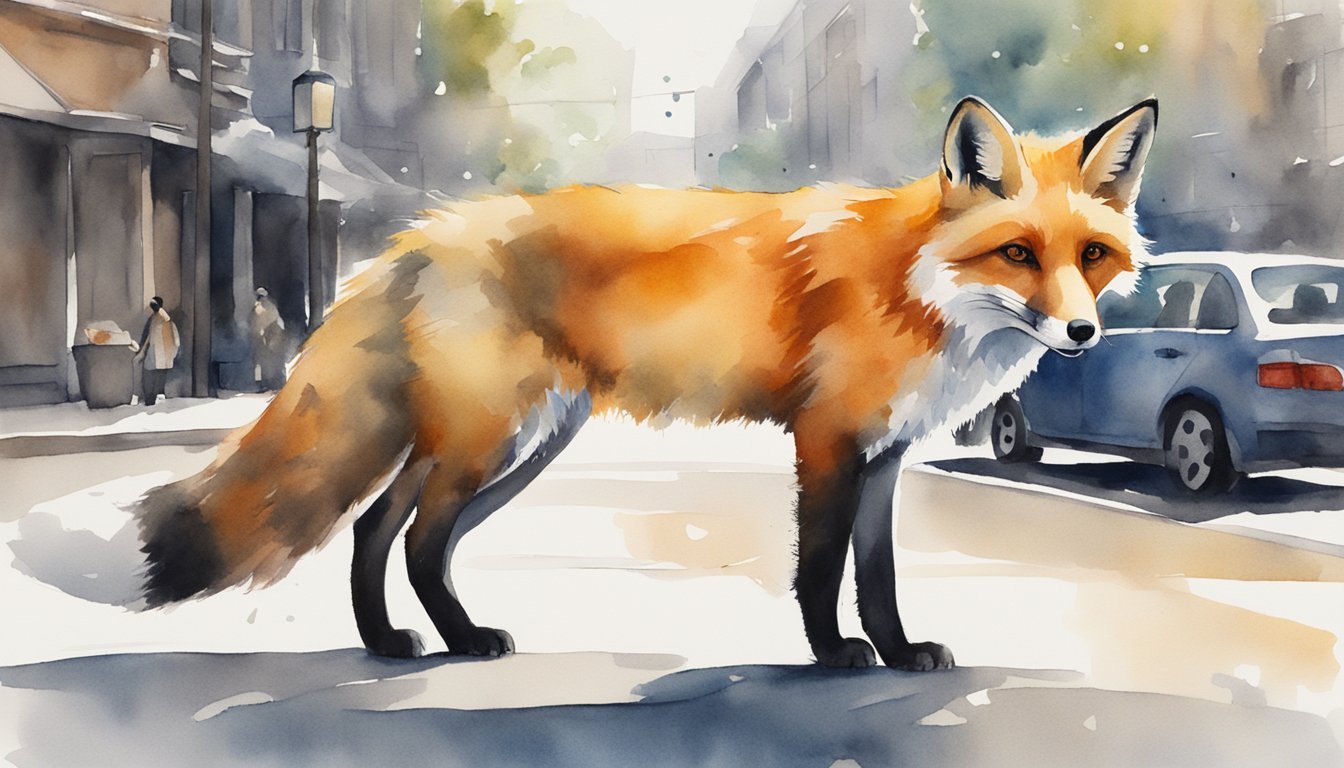Fox Dog Hybrid Basics
Exploring the concept of a fox-dog hybrid brings us to an intricate blend of genetics and rare instances of inter-species breeding. These hybrids capture our curiosity through their unique blend of traits and the complex science behind their existence.
Genetic Composition and Hybridization Process
Fox-dog hybrids result from interbreeding between a domestic dog (Canis lupus familiaris) and a wild canid like the Pampas fox (Lycalopex gymnocercus). The genetic analysis of such hybrids often reveals a complex web of chromosomes that demonstrates traits from both species.
Species and Origin
The discussion on fox-dog hybrids points to an extraordinary event in Brazil where such a crossbreed was identified. This hybrid, a result of breeding between domestic dogs and the Pampas fox, has brought attention to the town of Rio Grande do Sul.
Historical and Cultural Significance
Though not common in historical records, the notion of a dog-fox hybrid has been a topic of interest both culturally, as depicted in stories like “The Fox and the Hound,” and scientifically for its rarity and implications about species barriers.
Scientific Research and Findings
Recent scientific research, including work by geneticists such as Rafael Kretschmer, has been driven by the discovery of these hybrids. Their investigation contributes to the broader field of genetics, conservation, and understanding of canid evolution.
Ethical Considerations and Conservation
The existence and study of fox-dog hybrids pose ethical questions regarding conservation and the impact of domestic animals on wild species. Efforts by conservationists in South America bring these considerations to the forefront.
Distinct Physical and Behavioral Traits
Hybrids like these exhibit a mix of features, from the docile eyes characteristic of domestic dogs to the pointed ears and shy behavior of foxes. These behavioral characteristics and physical attributes are frequently studied to better understand the origins of the crossbreed.
Comparisons to Other Canines
Fox-dog hybrids differ significantly from other canines like wolves, coyotes, and jackals. While they share the family tree, the genetic makeup of hybrids sets them apart from these and other related species such as the true foxes of North America and Europe.
Fertility and Reproduction Challenges
Hybrids often face fertility and reproduction challenges similar to other cross-species animals like mules and ligers. Such challenges include being sterile or having significantly reduced fertility, which impacts their potential for creating further hybrid generations.
For more details on the genetic intricacies of these hybrids, you can read an article by suchscience.net. To see photos of the world’s first reported fox-dog hybrid, take a look at Popular Mechanics. The story of ‘Dogxim’, the first well-documented dog-fox hybrid, is discussed in an article on National Geographic. For a comprehensive overview of this hybrid, Wikipedia provides an extensive entry. Challenges faced by fox-dog hybrids are elaborated by fluffytamer.com.
Human and Societal Impact

The discovery of the first hybrid between a domestic dog and a wild fox, known as the “dogxim,” has garnered significant attention for its implications on human society, potential domestication, and the future of conservation efforts. This unique hybrid raises questions about the genetic compatibility between domestic and wild species, as well as the potential ecological impact of such crossings. Scientists are also exploring whether the dogxim could influence disease transmission dynamics, particularly in regions where foxes are common carriers of certain zoonotic diseases. Additionally, ongoing Lyme disease vaccine progress may play a role in mitigating health risks associated with wildlife hybrids entering urban environments.
Fox Dog Hybrid in Domestication
The dogxim, a product of a dog and fox interbreeding, exhibits unique features and behaviors from both species, stirring curiosity about its potential role in domestication.
Potential for Pet Ownership
While some may perceive dog-fox hybrids as potential pets, offering a novel form of companionship, the complex genetic and behavioral traits of these hybrids may present challenges uncommon in standard dog breeds.
Conservation and Biodiversity Implications
Dog-fox hybrids highlight concerns in conservation; the increasing encounters between domestic dogs and wild canids could compromise biodiversity and wild species’ genetic integrity.
Media Portrayal and Public Perception
Media such as “The Fox and the Hound” have illustrated the friendly bond between different species, which in turn influences the public’s perception of the dogxim as a potential friendly hybrid, despite the scientific complexity behind such crossbreeds.
Legal and Regulatory Status
In Brazil, and other South American countries, the legal status of hybrids like the dogxim is under scrutiny, as it falls into a gray area not entirely covered by current laws protecting wildlife and regulating domestic animals.
Implications for Future Scientific Research
The appearance of this hybrid opens avenues for scientific research into genetic viability, hybridization effects, and species evolution, broadening our understanding of canid development.
Human-Centered Stories and Anecdotes
Stories of cross-species companionship resonate with people, often creating anecdotal evidence of hybrids like dog and fox being lasting companions; however, these narratives do not always reflect the complex reality of wild and domestic animal behavior.
Challenges in Crossbreeding Programs
Crossbreeding between a domestic dog and a fox poses significant challenges due to the differences in behavior, habitat, and genetics, raising concerns about the welfare and viability of resulting hybrids.

